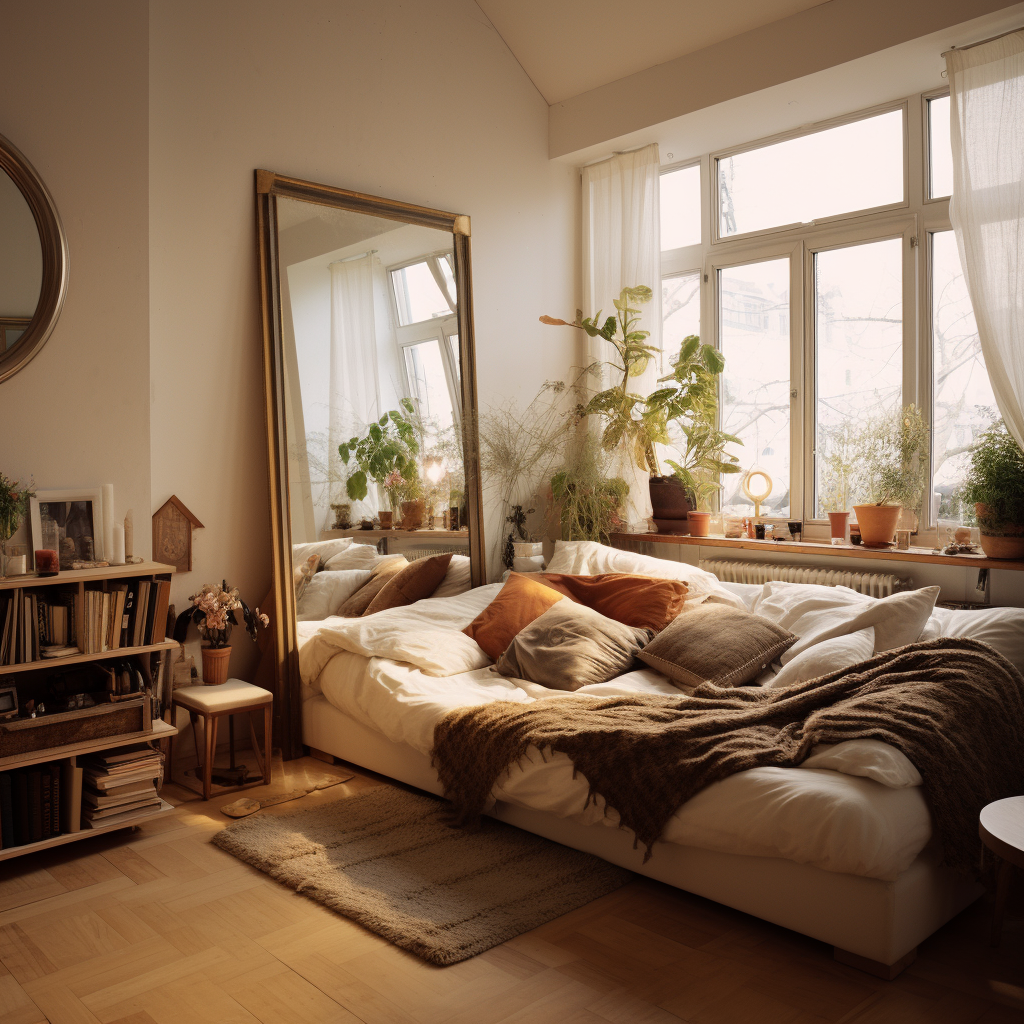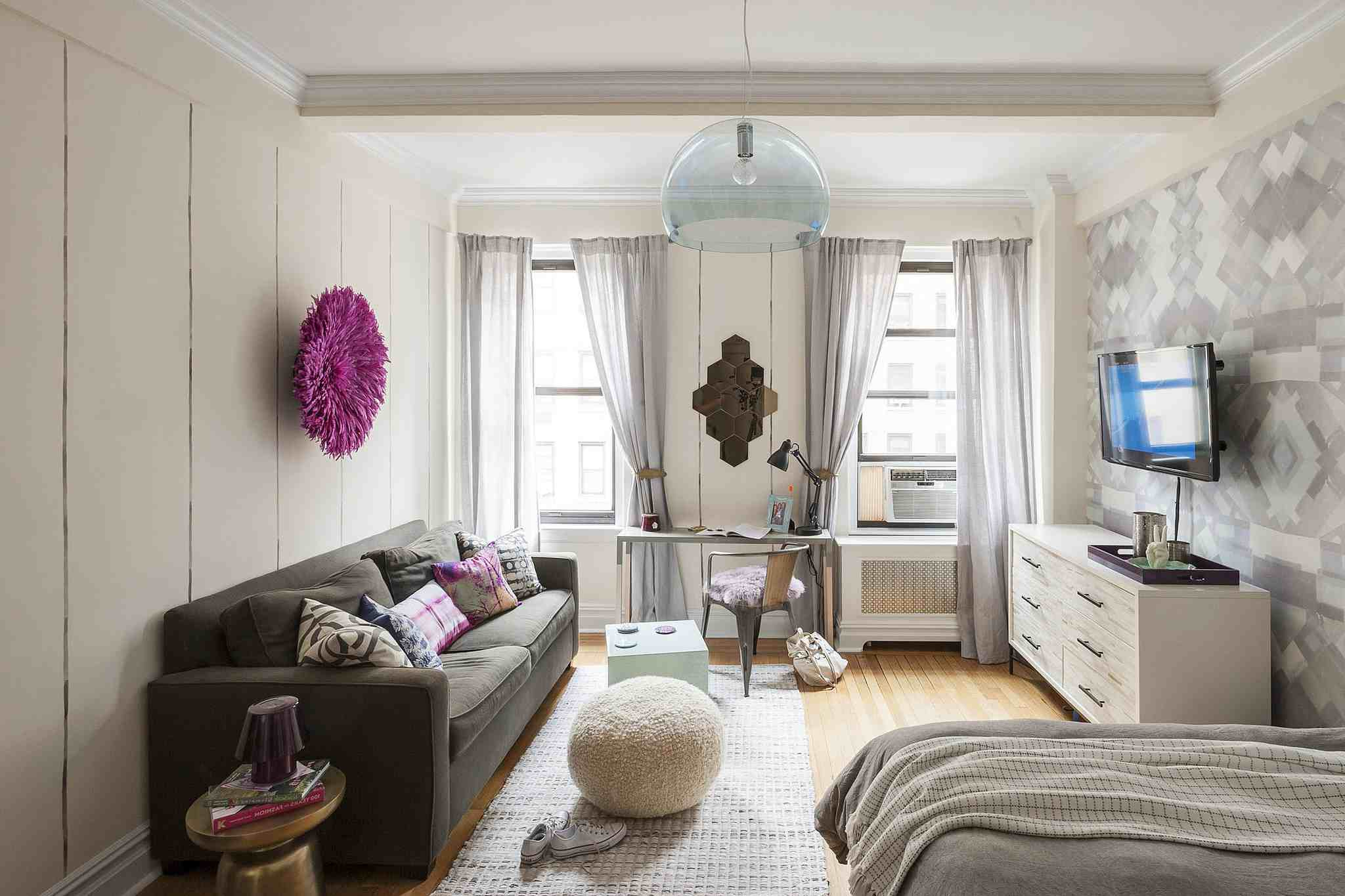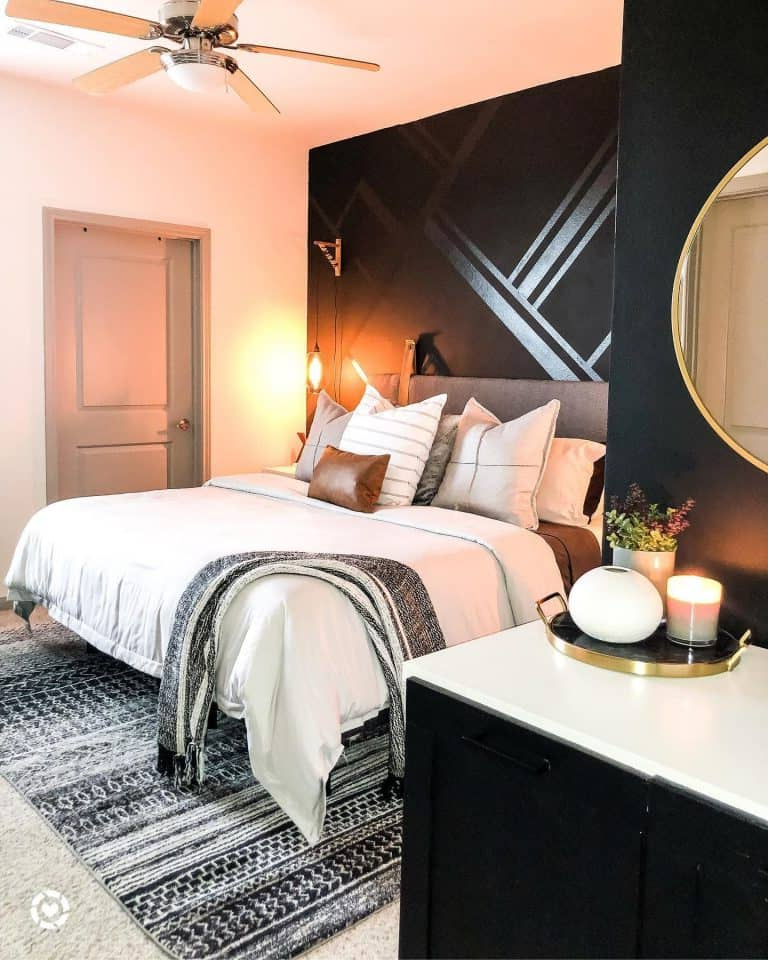Imagine waking up each morning in a bedroom that feels like a warm embrace, even when walls seem to close in. The magic happens not just in the mattress or the view out the window, but in how light dances through your tiny sanctuary. For those of us living in compact spaces, lighting isn’t just about illumination—it’s about creating atmosphere, comfort, and the illusion of more room.
Small apartment bedrooms present unique challenges that go beyond just square footage. The limited space means every element must work double duty, especially lighting. When you’re trying to fit a bed, dresser, nightstand, and maybe a chair or two into a space that might measure just 8×10 feet, lighting choices become crucial. It’s easy to think that bigger is better, but in small rooms, smart lighting actually makes all the difference between feeling cramped and feeling cozy. Good lighting can make a tiny bedroom feel airy and open, while poor choices can make even a modest-sized room feel claustrophobic. The right approach transforms your bedroom from merely functional to truly comfortable.
Understanding Light Quality and Its Impact on Mood
The color temperature of your lights matters more than you might think. Warm white light, around 2700K to 3000K, creates a soft, welcoming atmosphere perfect for relaxing before sleep. Cool white light, 4000K to 5000K, is better for tasks and energy, but can feel harsh if used too much in sleeping areas. Think about how different times of day affect your mood—sunrise brings bright, cool light that energizes us, while sunset offers warm, golden tones that encourage rest. In a small bedroom, you want to create that same natural rhythm. Consider using dimmable fixtures that let you shift between warm and cool tones throughout the day. A bedside lamp with adjustable brightness can be your best friend, allowing you to start the day with a gentle glow and wind down with a softer ambiance.
Layered Lighting for Maximum Functionality
This is where the magic happens in small spaces. Instead of relying on one main overhead light, build layers of lighting that serve different purposes. Start with ambient lighting—the general illumination that fills the entire room. Then add task lighting for activities like reading or getting ready in the morning. Finally, incorporate accent lighting to highlight special features or create visual interest. Picture this setup: a softly glowing ceiling fixture provides overall illumination, a table lamp beside your bed offers reading light, and perhaps some string lights draped across your wall add a touch of whimsy. Each layer serves its purpose while contributing to the overall comfort of your space. The key is choosing lights that complement rather than compete with each other.
Strategic Placement for Visual Space Enhancement
Where you place your lights can make a dramatic difference in how spacious your bedroom feels. Position lights to avoid casting shadows that make corners look darker and more confined. Wall sconces on either side of a mirror can eliminate the dark spots that often make a room feel smaller. Consider placing lights higher up on walls rather than at eye level to draw the eye upward and create a sense of height. A clever trick many people overlook is using lights to highlight architectural features like crown molding or built-in shelves. These elements become focal points that guide the eye around the room, making it feel larger than it actually is. Even a simple LED strip light behind a headboard can create an illusion of depth.
Smart Technology Integration for Convenience
Modern smart lighting systems have revolutionized how we think about bedroom lighting. You can program lights to turn on gradually in the morning, mimicking sunrise to help you wake up naturally. Set them to dim automatically in the evening, creating a peaceful transition to bedtime. Some systems even allow you to control lighting through smartphone apps, so you can adjust settings from anywhere in the house. This is particularly useful in small apartments where you might have multiple lighting zones. Smart bulbs can change color temperature based on time of day, and some even sync with music or movies. The convenience factor alone makes these investments worthwhile, especially when you consider how much better sleep quality can be when your lighting supports your natural rhythms.
Energy Efficiency Without Sacrificing Comfort
LED technology has come a long way, and today’s LED bulbs provide excellent light quality while using significantly less energy than traditional incandescent options. This is especially important in small apartments where you might be using multiple light sources throughout the day. LED bulbs also generate less heat, which is beneficial during warmer months when you’re already trying to keep your bedroom comfortable. Many LED options offer dimming capabilities, giving you flexibility to adjust brightness levels for different activities and moods. Look for bulbs with high Color Rendering Index (CRI) ratings of 90 or above—they accurately show colors and make everything in your room look better. The initial investment pays off quickly through reduced electricity bills and longer bulb lifespans.
Practical Tips for Maximizing Small Space Lighting
Here are some actionable strategies to make the most of your lighting in tight quarters:
• Use mirrors strategically to reflect light and create the illusion of more space
• Choose fixtures that are proportional to your room size—large statement pieces can overwhelm small areas
• Install dimmer switches to create different atmospheres for various activities
• Consider plug-in lamps instead of permanent fixtures for flexibility
• Look for multi-functional furniture with built-in lighting
• Use light-colored walls and bedding to reflect and amplify available light
• Avoid overly bright overhead lighting that can create harsh shadows
• Incorporate natural light maximization through window treatments that let in sunlight during the day
Creating a Personalized Lighting Environment
Every person’s relationship with light is different, so take time to experiment with what works best for your lifestyle. Do you need bright light to get things done in the morning? Or do you prefer soft lighting to wind down at night? Are you someone who reads regularly, or does your bedroom primarily serve as a sleep space? Your answers to these questions will guide your lighting choices. Some people find that having different lighting scenarios for different activities—like a bright setting for morning routines and a warm, dim setting for evening relaxation—makes their small bedroom feel more versatile. Don’t be afraid to try new combinations until you find what makes you feel most comfortable and relaxed in your personal space.
Avoiding Common Lighting Mistakes in Small Spaces
Even well-intentioned lighting choices can backfire in small apartments. One common error is using too many bright lights, which creates harsh contrasts and makes the space feel cold and unwelcoming. Another mistake is placing lights too low, which can make ceilings feel lower and the room feel smaller. Overlooking the importance of task lighting is also frequent—without proper lighting for reading or grooming, you’ll find yourself squinting or using your phone as a light source. Remember that in small spaces, less can often be more. Sometimes a single carefully placed light is more effective than several poorly positioned ones. Also, don’t forget to consider the practical aspects—will you be changing bulbs frequently? Will the fixtures be easy to clean in your small space?
The Psychology Behind Lighting Choices
Lighting affects our circadian rhythms, emotional states, and even our perception of time. In a small bedroom, these effects are amplified because you spend so much time in this intimate space. Blue light exposure in the evening can interfere with sleep, while natural light exposure during the day helps regulate your internal clock. Consider how your lighting choices affect your daily routine and sleep patterns. A bedroom that feels calm and inviting during the day might feel too dark or intimidating at night. Understanding these psychological impacts helps you make better decisions about where to place lights, what types to choose, and how to use them effectively. This knowledge transforms your bedroom from just a place to sleep into a space that genuinely supports your well-being.
Transforming a small apartment bedroom into a comfortable retreat isn’t about adding more furniture or painting the walls a different color—it’s about understanding how light shapes our experience of space. The right lighting strategy can make your compact bedroom feel both cozy and expansive, functional yet relaxing. Whether you’re dealing with a studio apartment or a converted closet, these lighting principles offer practical solutions that respect both your space limitations and your need for comfort. The investment in thoughtful lighting pays dividends in sleep quality, mood, and daily comfort. Remember, the goal isn’t to fill every corner with light, but to create a harmonious balance that makes you feel at ease in your little corner of the world. With careful planning and a willingness to experiment, your small bedroom can become your favorite room in the house.















